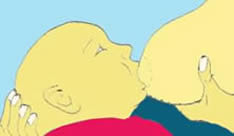To ensure a successful breastfeeding, your baby should be put properly to the breast. Usually, positioning and attaching your baby to the breast comes naturally, but some mothers and babies need time and practice to get it right. The following tips may help.
- Positioning
- Attachment
- Signs of poor attachment
- Assessing whether your baby is feeding well
Positioning
- Hold your baby close, with the baby’s body turned towards you, facing you or your breast.
- Make sure your baby’s head and body are in a straight line.
- Firmly support the baby’s back and buttock.
- You can position your baby in many ways as long as your are comfortable.
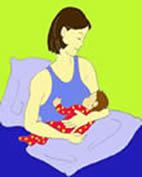 |
|
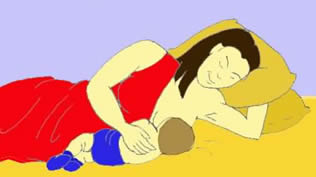 |
|
|
Attachment 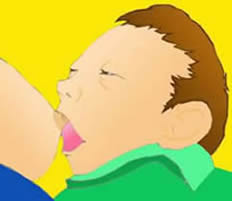 |
|
 |
|
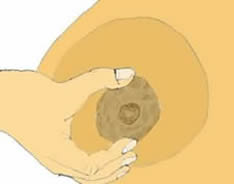 |
|
Signs of poor attachment
When breastfeeding is going well, your nipple will never damage because it is so far back in the baby’s mouth. Most of the problems faced by the mothers are due to incorrect positioning and attachment. Here are few signs of poor attachment which might cause problem to you while you are breastfeeding:
- Your nipple looks flattened or striped as it leaves your baby’s mouth at the end of the feed
- You feel pain in the nipples during and after feeds
- Your breast may be engorged
- The will be inefficient removal of milk from the breast
|
|
The picture shows a baby who is not well attached to the breast. Poor attachment can lead to problems like breast engorgement and sore nipple. |
Assessing whether your baby is feeding well
Here is what your baby should look like when he is feeding well:
- His mouth is open wide
- His chin is touching the breast
- His lower lip is curled outward
- His nose lies right against your breast, and he is free to breath.
- He suckles, pauses, and suckles again – in slow, deep sucks
- You may hear your baby swallowing
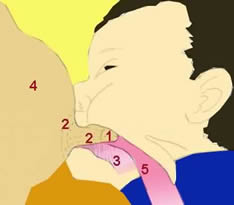 |
The diagram shows what goes on inside your baby’s mouth when breastfeeding properly.
|
|
|
The picture shows a baby who is properly attached attach to the breast. |
| Last reviewed | : | 02 October 2009 |
| Writer | : | Zalma Bt. Abdul Razak |
| Zuhaida Bt. Harun | ||
| Nazli Suhardi B. Ibrahim |


